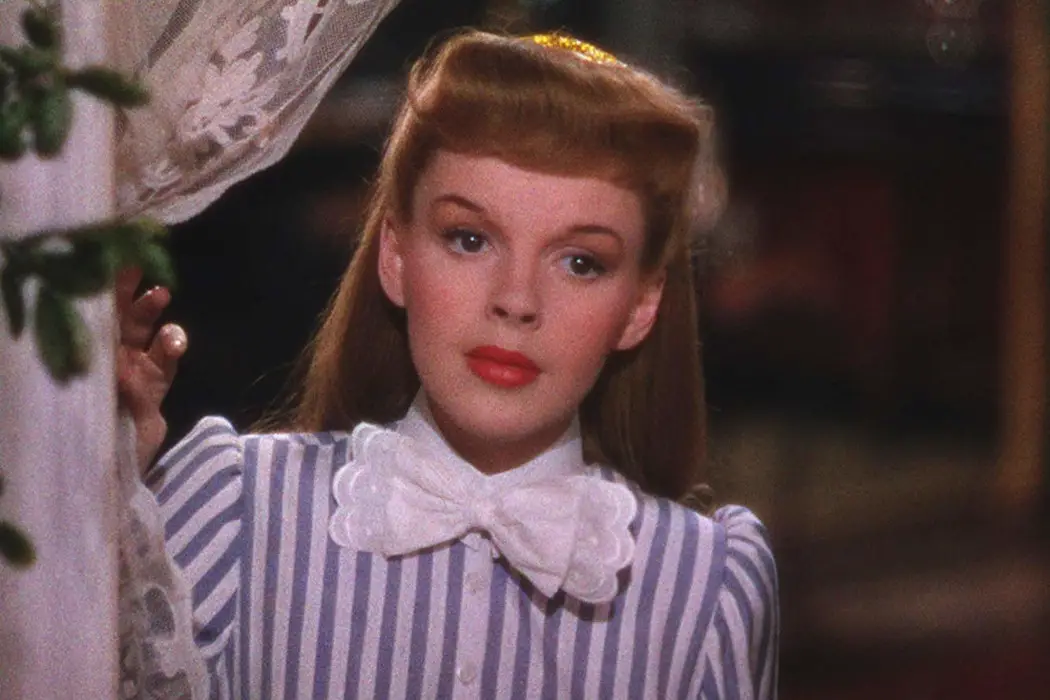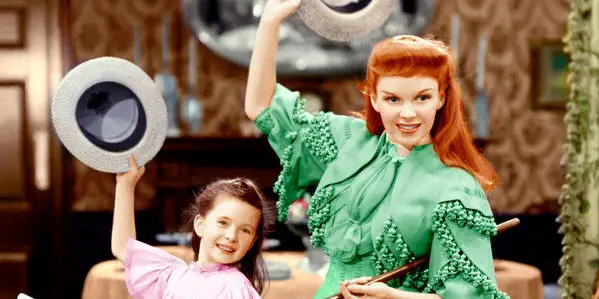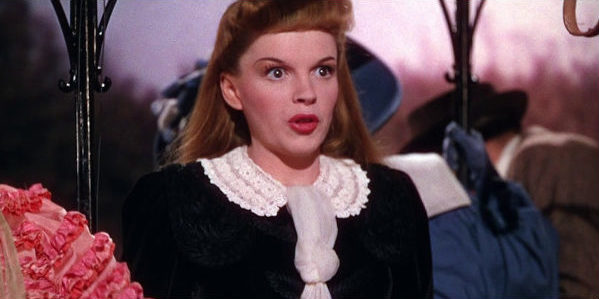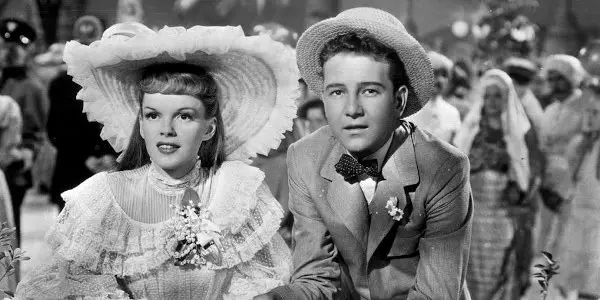MEET ME IN ST. LOUIS 75th Anniversary: A Golden Care Package

Luke Parker is an award-winning film critic and columnist based…
Released in 1944, Vincente Minnelli’s charming, evergreen musical Meet Me In St. Louis once accompanied the country’s drudging attachment to World War II. If only for two hours, its domestic harmony and narrative simplicity conquered the nation’s overbearing call to duty, masking it with the universal comforts of home, no matter what or where that may be. Three quarters of a century later, the film still beckons the miracles of love and family; it’s a fine-tuned, pastel romp, worthy of its place among the best of the big brass Hollywood musicals.
Set on the brink of a sensational cultural moment, Meet Me In St. Louis chronicles the lives of the Smith family – a well-off, but mostly everyman clan – in the year leading up to their Missouri city’s hosting of the World’s Fair. The event is particularly enticing for the Smith’s five children, but most especially so for Esther (Judy Garland), the middle-of-the-bunch teenager who hosts a high-spirited fascination with everything around her. Recently, however, her eyes and heart have been locked on “The Boy Next Door,” John Truett (Tom Drake).
A Whacky, Daffy Household
It’s a common misconception that Meet Me In St. Louis is banked on Esther’s flirtatious quest for the All-American Truett. While it is true that this young romance holds the burden of the studio genre’s mandatory, overarching love story, the film itself, adapted from a reminisced series of New Yorker short stories lovingly penned by Sally Benson, is really a vehicle for the Smith’s own atmospheric, absolute love – showcasing both the forces that steer them apart as well as the ever stronger ones that bring them back together.

This four-vignette production, corresponding with the seasons separating Summer 1903 from Spring 1904, starts off gliding along the modest, often melodramatic half-dilemmas of the suburban household – most particularly those concerning its four young women.
Upon entering the frame, we witness Esther manipulating the family’s thick routine to give her eldest sister Rose (Lucille Bremer) some breathing room for her long-distance call with a “gentleman friend;” after all, the fact that it’s long distance can only mean it’s a proposal. This quick conniving sets the stage for a series of playful antics that run through a great portion of the year.
The fun is decked, however, once patriarch Alonzo Smith (Leon Ames) suddenly drops the news that his job is displacing all of their sprouting social lives and tossing them into the cusps of New York City. Their sense of normalcy and the protection therein are abruptly shattered; things may never be the same again.

Upon this transition, Minnelli successfully balances the weighty consequences of this industrial period with the otherwise lofty lives of the Smith children (pressing concerns during this time also include fitting in with the local delinquents, digging up dead dolls, dates to the local dance, and the whereabouts of community tuxedos).
A Natural Musical
The musical institution is not notorious for its subtlety, especially in the context of its mammoth, pioneering productions from the 1930s, ‘40s, and ‘50s. While in the thick of the genre’s greatest cultural explosion, Meet Me In St. Louis, however, voyaged in a separate direction. It traded in grand, spanning sequences for more condensed endeavors, whose numbers (compiled by Ralph Blane and Hugh Martin) and dances were embedded into the story, rather than plopped. They were organic, unique, intimate – the most elaborate sets include a foyer soiree and a trolley car – and, most importantly, undisruptive to the drama.
Garland, whose golden cords quiver through the longings for love and normalcy, is the film’s true draw. For a woman whose legacy has been defined by its transient nature, she is at her most radiant here. And working with Minnelli (whom the then 21-year-old actress would marry the next year), she protrudes her symbiotic and erotic relationship with the camera. One particularly mesmerizing sequence, in which Esther guides her crush through the grand rooms of her house to turn down its gaslights, is still a filmic wonder.

As its own recurring character, indelible to the plot’s success, the music itself is also used as a binding beacon. In the wake of Alonzo’s announcement, the majority of the family retreats to their rooms in utter grievance. Mrs. Smith (the immortal Mary Astor), however, stays, calmly stepping up to the piano and inciting a duet of the love ballad “You and I.” Alonzo joins in, projecting the strength of their marriage across the parlor. The seismic melodic waves make their way up the stairs, reminding the rest of the Smiths, who promptly return as members of the audience, of their need for one another.
Conclusion: Meet Me In St. Louis
Meet Me In St. Louis was not the first Hollywood musical to explore the battering effects of financial obligations on the domestic household – though its proximity to and respect for the qualms of women at the turn of the century is certainly admirable – but it is undeniably one of the best.
With the visual splendor of Technicolor at the height of its floral aptitudes, a memorably amiable cast – spearheaded by Judy Garland and youngster Margaret O’Brien as the adorable deviant Tootie Smith – guides us through a loving fable of well wishes, nostalgia-laced frolics, and the intuitive spirit of family.
Do you think Meet Me In St. Louis deserves to be ranked among the best of Hollywood’s musicals? Be sure to let us know in the comment section below!
In celebration of its 75th anniversary, Meet Me In St. Louis will return to theaters for a special, two-day engagement on December 8 and 11 courtesy of Fathom Events and Turner Classic Movies.
Does content like this matter to you?
Become a Member and support film journalism. Unlock access to all of Film Inquiry`s great articles. Join a community of like-minded readers who are passionate about cinema - get access to our private members Network, give back to independent filmmakers, and more.
Luke Parker is an award-winning film critic and columnist based in the Baltimore-Washington metropolitan area. As an entertainment journalist, he has interviewed several members of the film industry and participated in some of its most prestigious events as a member of the press. Currently, he is working to obtain his bachelor’s degree in Mass Communication at Towson University.












